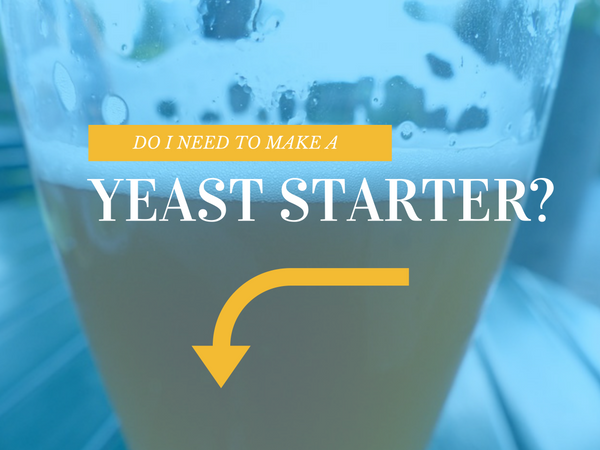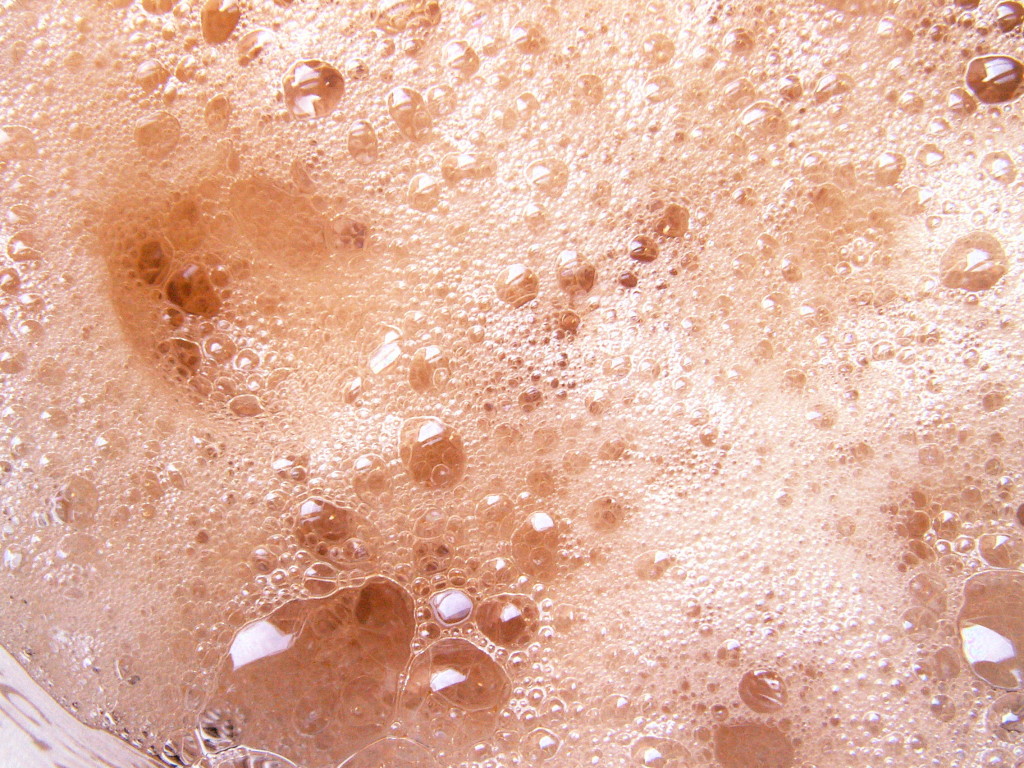Do I Need To Make A Yeast Starter?
You probably know a thing or two about yeast starters, either you’ve read about them, heard other brewers talk about “making a yeast starter” or you make one before brewing every batch. Home brewers will often profess it’s provided one of the biggest improvements to their beers, but, do you always need to make a yeast starter? That is what we will discuss in this article
Table of Contents
Why Make A Yeast Starter?
Yeast is the organism that turns wort into beer or must into wine. Making sure that the condition of the yeast is as good as possible has the knock on effect of producing better beer or wine. To gain the biggest improvements on the fermentation and therefore the biggest improvements in taste you need to make sure you are pitching enough yeast cells and that those cells a viable for fermentation.
These two factors; viability and cell count are the primary concern when you’re pitching yeast. Other factors such as temperature and nutrients are easily controlled, viability and pitching enough yeast to ferment the beer requires a little bit of information about the yeast and some pre-planning before you start brewing.
Yeast Cells and Viability
The number of yeast cells you need for a healthy, vigorous fermentation depends on a few factors such as how much beer you are brewing, whether it’s an ale or lager and the gravity.
All of the yeast available to homebrewers are packaged in quantities suitable for pitching directly into 5 gallons of wort and will ferment the beer, the number of yeast cells in a package, however, starts on the low side, this is fine in most cases because the yeast first phase in the fermenter is to reproduce to ensure there are enough yeast cells available to ferment all the sugars in the wort. However, yeast doesn’t remain stable in the package indefinitely over time the viability of the yeast decreases and the cell count drops meaning the growth phase is stretched out and the fermentation starts poorly.
Yeast viability is a term used to describe the general health of the yeast. As a packet of yeast sits on the shelf in the fridge the number of cells that will be active when pitched in a beer decreases. If the viability drops too much the fermentation will start poorly or in the worst case not at all. Viability is easy enough to check, all packages of yeast have a production date or best before date, the viability of the yeast in the pack decreases over time. Check out the best way to store yeast here.
Liquid yeast has a much shorter shelf life than dried yeast. The shelf life for liquid yeast is 4 months, after the 4 months there will only be between 10% -20% viable yeast cells in the package. This means the vast majority of the cells are already useless.
Dried yeast, on the other hand, has a longer shelf life. The viability is only decreased by around 2% – 4% per month meaning after a year of storage you will still have more than half the yeast cells viable to ferment the beer.
When the viability drops and therefore the number of cells available to ferment the beer, it is then worth considering making a yeast starter to ensure fermentation starts quickly and the yeast ferments the beer with a minimum of off flavours.
Yeast Pitching Rate
The amount of yeast we need to pitch is dependent on a few things, firstly the amount of beer being brewed and also the amount of fermentables in the wort/strength of the beer.
A study by George Fix found that optimum pitching rates for ale were 0.75 billion cells per millilitre per degree plato. This translates to around 180 – 200 billion cells for a 20 litre batch of 5% ABV beer. Lager require a higher pitching rate of roughly double this amount.
Bear in mind this is optimum, which is more applicable to commercial breweries but what it indicates is that the stronger the beer you are making the more yeast you’ll need and the higher/lower the volume of beer the more/fewer yeast cells you’ll need to pitch.
Homebrew pitching rates are usually a little lower and this is not a problem if your cleaning and sanitation practices are up to scratch a cell count of 0.5 billion cells per millilitre per degree plato is fine which translates to around 120 – 140 billion cells for a 20 litre batch of 5% ABV beer
If you are ever unsure about how much yeast you are pitching then check out this calculator which helps you work out how much yeast to pitch for the beer you are brewing
When To Make A Yeast Starter?
Yeast strains available to homebrewers are usually always formulated to be able to ferment between 19 and 21 litres of beer or around 5 gallons but depending on the age and condition of the yeast you have the number of cells may not be high enough to be optimum for getting fermentation started quickly, again if good sanitation practices are followed this isn’t too much of a problem.
If you are making smaller batches it is, of course, less likely you will need a yeast starter. If you brew larger batches then you should always be making a starter or pitching multiple packages of yeast. The best thing to do would be to use a pitching rate calculator as mentioned above to work out how many cells you need for the beer you are brewing, and how many are in the packet of yeast you are using.
If I am using a dry yeast, I usually don’t bother making a starter. The cell count in dry yeasts is a lot higher than in liquid strains and the dried yeast cells are a lot more stable in storage. My recommendation is to rehydrate the yeast as per the manufacturer’s recommendations and then pitch. If you are using a packet of dry yeast that is close or past it recommended use by date then make a yeast starter to ensure, firstly that the yeast is viable and secondly to increase the cell count before pitching the yeast into the wort.
Liquid yeast available, especially here in the UK is more likely to need a starter. As the yeast has to be shipped from the US in most cases it is usually at least a few weeks old if not more before it even goes on sale here. The viability will have dropped quicker than a dry yeast and so it is usually best practice to make a starter if you’re using a liquid strain.
Making A Yeast Starter
Here is the technique I use to make a yeast starter. I just use a simple jar, some people like to build stir plates and place Erlenmeyer flasks on them but that is not necessary when you are only stepping up a tube or package of yeast once to increase the cell count.
The yeast will naturally want to reproduce, this is exactly what happens when you pitch yeast into the wort. A stir plate is advantageous if you are culturing a very small amount of yeast cells either from commercial bottled beers or slants that have far fewer yeast cells as a stir plate encourages yeast growth far more aggressively by supplying the cells constantly with oxygen.
Things you will need:
- Glass Jug or Jar
- Dry Malt Extract
- Sauce pan and lid
- Yeast
- Thermometer
- Sanitiser
- Foil
1. Put 4 tablespoons full of dry malt extract into the pan and add 2 pints of water. It is important that not too much dry malt extract is added as when the starter starts to ferment it will produce alcohol. If the levels of alcohol are too high it will become toxic to the yeast cells.
2. Bring the mixture to the boil. Whilst this is happening, make sure your glass container and thermometer are completely sanitised using your preferred sanitiser, this is imperative.
3. After boiling the malt extract and water for around 10 minutes this will also be sterile allow to cool to room temperature with the lid on. It may be a good idea to use a cold water bath for this to get it cool quickly.
4. Pour the malt extract solution (wort effectively) into the sterilised container and check it is at room temperature with a sterilised thermometer.
5. Pitch the yeast. If this is liquid straight from the vial. If dried it should be rehydrated according to the packet instructions.
6. Cover the container with a sterilised piece of foil and shake vigorously to get as much oxygen as possible into the wort. You can shake every so often for the next 24 hours whilst the yeast reproduces.
It may not seem to be doing anything for a while but eventually you will see some signs of activity and a layer of yeast will form at the bottom of the container in a whitish layer.
It is a good idea to do this a couple of days beforehand so you can ensure the maximum amount of yeast cell reproduction. When you are ready to pitch you can swirl the yeast back into suspension and add the whole lot or decant off a proportion of the starter without disturbing the yeast then swirl and pitch to the wort.






Leave a Reply
Want to join the discussion?Feel free to contribute!